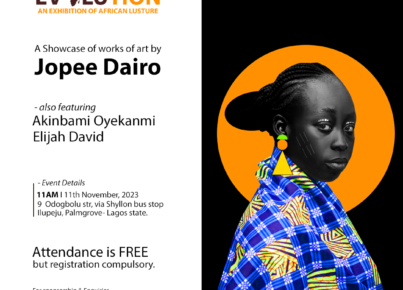[dropcap custom_class=”normal”] Akwete cloth is a unique hand woven fabric of Igbo women of Akwete in Abia State, Nigeria. The fabric was originally referred to as “Akwa Miri” (Cloth of the water) which means towel and mostly weaved by the women on a vertical loom. Akwete cloth weaving is said to be as old as the Igbo nation. [/dropcap]
Akwete Igbo Cloth
Akwete cloth comes in different patterns and motifs. Most motifs are found on one side but can also be seen on both sides, and they are named according to their appearance, examples are animals heart; children’s fingers; comb; earring; snake-back; stool and tortoise (symbol of cunning and wisdom), and ritual objects and symbols.. The patterns ranges from plain stripped to heavy patterned cloths.
In the olden days, the “tortoise” motif (ikaki) is only worn by members of royal families and if anybody from non-royal family dares wear it, he or she could be punished or be sold into slavery. The “ebe” design is specially reserved for use as a protective talisman for pregnant women or warriors.
Most of these designs or motifs are by inspiration because the weavers claim that certain motifs are revealed to them by the gods, and as a result, no weaver is allowed to copy the design and it therefore dies with its owner.
Akwete weavers are multi talented and have adapted to modern influences, incorporating new motifs such as the Nigerian coat of arms, Nigerian flag, the logo of FESTAC (the 2nd All Black Festival of the Arts held in Nigeria in 1977) as designs on their cloths.
Dada Nwakata is the pioneer of the highly ornamented intricate weft patterns on Akwete cloth. She used imported cotton and silk (probably rayon) yarns.
According to A. E. Afigbo, a renown Igbo historian in (1985), Dada Nwakata unravelled threads from an open woven cotton cloth locally known as acham, brought to the area through trade with the potoki (Portuguese) sometimes between the 14-16 centuries when the latter operated in the Bight of Biafra.
After studying the weave structures of the heavily ornamented cloth, Dada Nwakata copied them and secretly began to weave a new style of Akwete designs. The style of her weave structures were revealed after her death by a deaf and dumb friend who was the only person she permitted in her company when she wove her cloths.
The Akwete cloths woven from sisal-hemp fibres are of coarse type, used by masqueraders, and by warriors as headgears, while those made from raffia fibres are used on religious occasions like the Ozo titleship, and for mourning by women. The Igbo men like Akwete with the interwoven geometric pattern on white ground.
The size of the Akwete fabric is what distinguishes it from other textiles made on vertical loom and it takes atleast three or more days to produce a standard length cloth (115cm wide x 1609cm long) with complex and intricate design. The length of the finished product is normally twice the height of the loom.
The Beving Collection
From the Adire African Textiles Site, it is said that “There were two generations of Charles Beving. Charles Beving senior was a West Africa trader born in Baden (he was Christened Karl), born in 1858. He worked from Manchester in the cotton business, first as a trader, trading in Africa for all but a few months every two years.
He became partner in a cotton printing company Blakeley & Beving, and later owned his own company Beving & Co, apparently at a late stage in his career.
He is listed in the 1891 Manchester census as ‘Africa Merchant’ and in 1901 as ‘merchant and calico printer’. He died in 1913. He formed for his company a large collection of items, largely textiles, from West Africa and Indonesia, as specimens on which his firm might model its productions for the African market.
This collection was donated to the Museum in 1934 by his eldest son, Charles Adolphus Beving, on behalf of Messrs Beving & Co of Manchester, with the request that it be known as the ‘Charles Beving collection’ in his father’s memory.
Braunholtz states that the collection was formed by Beving senior, and there is no reason to think that the son ever made additions to the collection. All items in it therefore have a secure dating before 1913, which makes this one of the earliest documented collections of African textiles.”
From the British Museum site culled from Adire African Textiles Site it is said that All cloths below are part of the Beving Collection and can be assumed to date from before 1913. All are woven from imported cotton thread. Images © Trustees of the British Museum.
For further information on any cloth the file name gives the museum reference number and may be looked up in the “Research the Collections” section of the museum site.







For more information on Akwete weaving see:
http://adireafricantextiles.blogspot.com/
Lisa Aronson – “Akwete Weaving: Tradition and Change” in Engelbrecht, B. & Gardi, B. eds. Man Does Not Go Naked (Basel, 1989)
Lisa Aronson – “We weave it:” Akwete Weavers, their patrons, and Innovation in a Global Economy. in Tornatore, S. ed. Cloth is the Center of the World: Nigerian Textiles, Global Perspectives. (2001)
Venice Lamb & Judy Holmes – Nigerian Weaving (Shell, 1980)
Sources:








